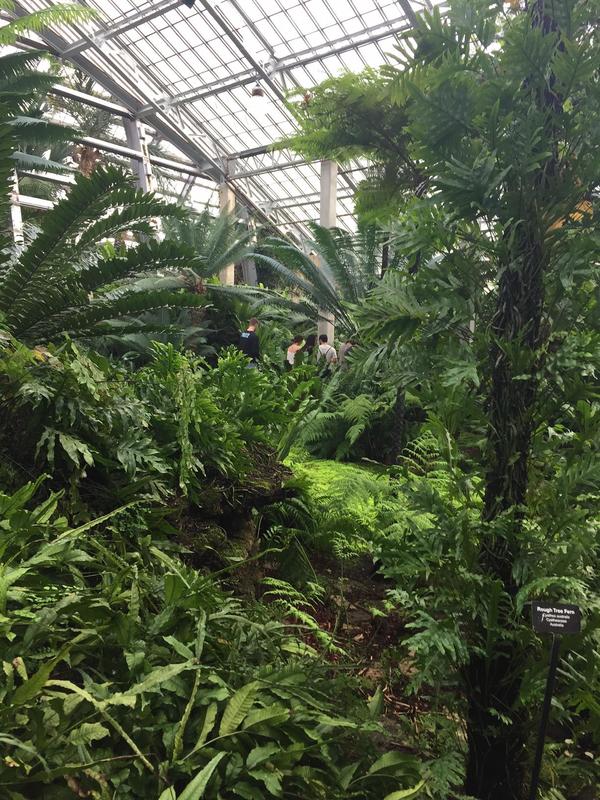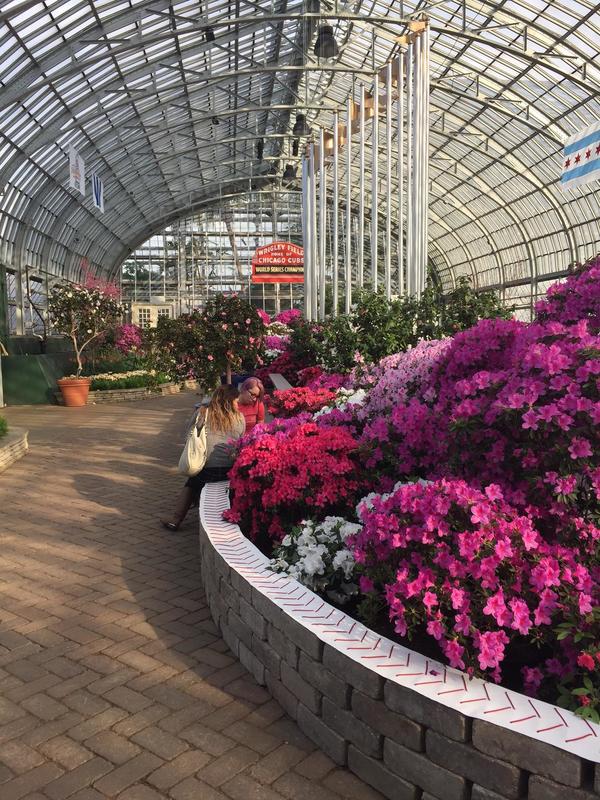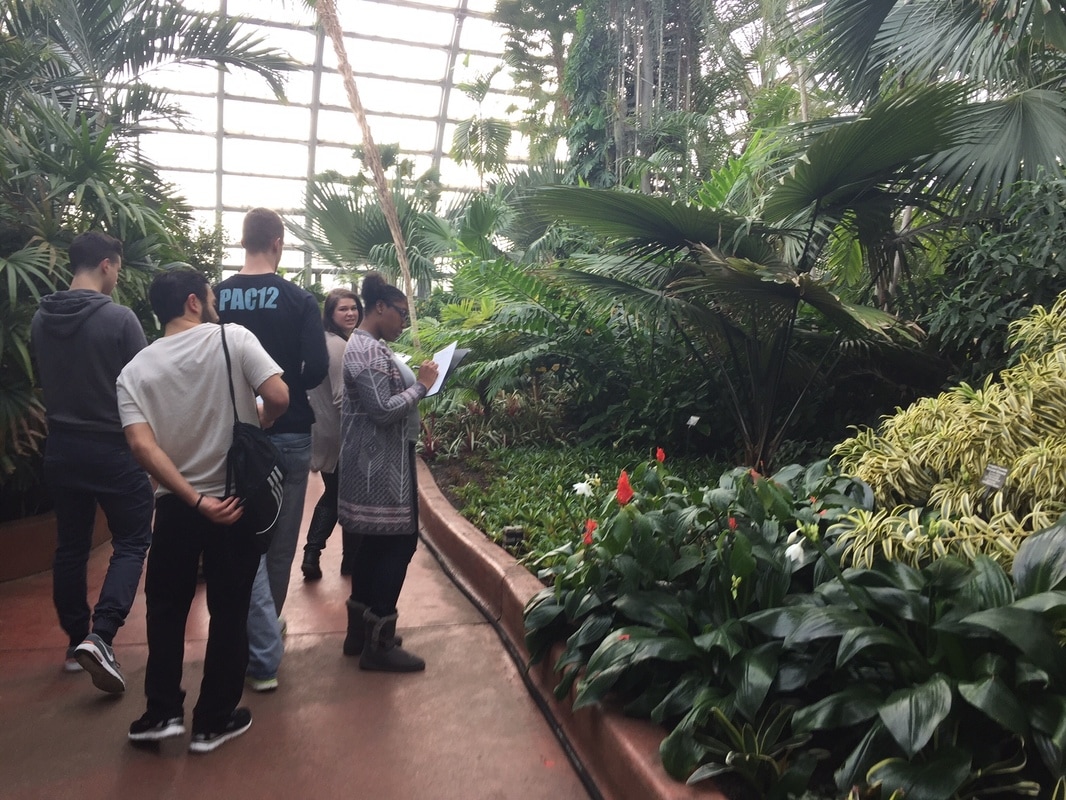This past week I had the opportunity to visit the Garfield Park Conservatory with students in my Survey of Plants and Animals course. Although driving a 12 passenger van there is not my most beloved of tasks, this is a field trip I look forward to each year. Wandering through the different rooms of the conservatory, you get a sense of the incredible diversity of species on our planet, as well as the diversity of habitats that plants inhabit. Flowering plants often steal the show, so to speak, and dominate the Spring Flower Show. However, don't miss the beauty of the plants that don't "advertise" with showy reproductive parts. In the Fern House you will find a plethora of seedless plants, such as mosses, liverworts, and ferns of all kinds. These species reproduce and disperse using spores. This year seemed to be a particularly good year for fern reproductive activities in the Conservatory, as sori (the structures that contain fern spores) could be found on the undersides of many a fern's leaf. The Fern House also houses an extensive collection of cycads, which are a type of gymnosperm. These plants do produce seeds, but the seeds are "naked" in the sense that they lack the exterior coating of a fruit. Among these plants, one might imagine strolling along the path and encountering a dinosaur or other prehistoric creature. The angiosperms, or flowering plants, should receive their due as well. In the Sugar from the Sun garden, many edible plants are on display--bananas, oranges, grapefruit, vanilla orchids, and the chocolate tree. Angiosperms have given us the great benefit of their many types of fruits. All angiosperms produce fruits in the botanical sense, as fruits are the mature ovary of the plant's flower (sound delicious, doesn't it?). Not all of the them are edible, but I am certainly grateful for all the delicious foods that we do get from fruits. And just think...not only does God's creation sustain all this amazing diversity in the plant world, but these plants then provide for all kinds of other creatures--ourselves included. Palm House
0 Comments
Leave a Reply. |
Abbie SchrotenboerI'm a biology professor at Trinity Christian College. I'll be using this page to share interesting stories related to ecology and conservation at Trinity and in the Chicago area (although I might be tempted to expand my geographic focus upon occasion). Archives
December 2020
Categories |



 RSS Feed
RSS Feed
